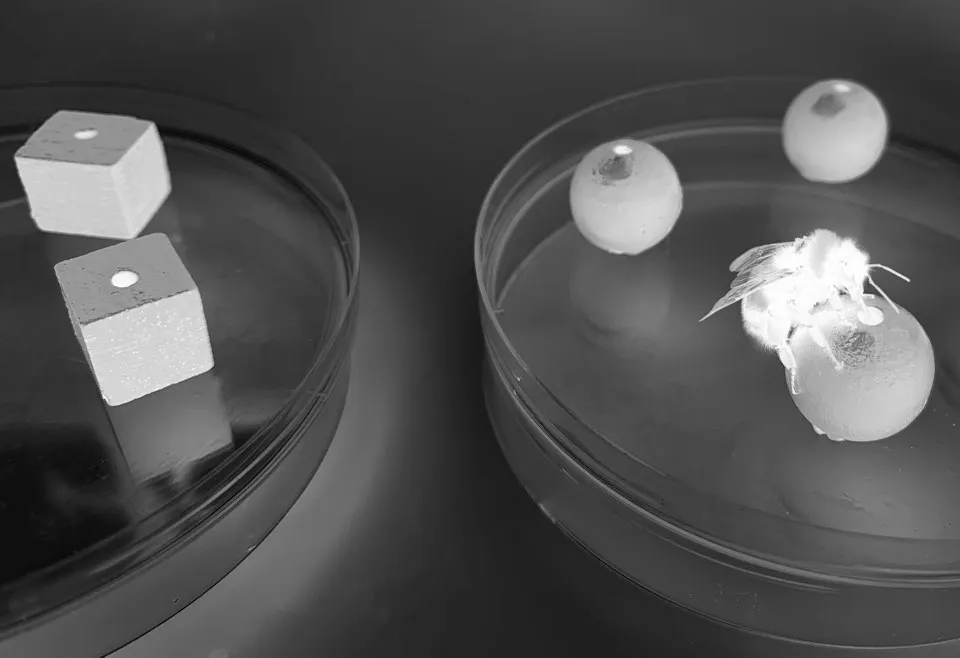- New study finds that bumblebees can recognise objects in the dark using the sense of touch.
- Results show that bumblebees are able to successfully recognise objects in both directions, sight-to-touch and touch-to-sight.
- Cross-modal object recognition has been shown in primates, rats, dolphins and electric fish.
Like humans, bumblebees have been found to recognise objects in the dark using their sense of touch.
Scientists have demonstrated that the insects are able to store information in such a way that it can be retrieved using different senses, a complex cognitive ability known as cross-modal object recognition.
Humans use this ability to recognise something they have seen before, like for example, finding a set of keys by fishing around at the bottom of a backpack.
Apart from bees and humans, cross-modal object recognition has been shown in primates, rats, dolphins and electric fish.

Selene Gutierrez Al-Khudhairy, a PhD student at the University of York and co-author on the study, said: “This is an amazing feat when you consider the minuscule size of a bee’s brain.”
Professor Lars Chittka, head of the lab at Queen Mary University of London where the study was performed, added: “We’ve long known that bees can remember the shapes of flowers.
“Our new work indicates that something is going on inside the mind of bees that is wholly different from a machine – that bees can conjure up mental images of shapes.”
Read more about bees:
- For bees, the sweeter the nectar, the harder to vomit
- Five fascinating facts about bees
- Footballing bees are expert problem solvers
The researchers trained 44 bumblebees to recognise two differently shaped objects, cubes and spheres, using either touch or vision.
Some of the shapes contained a bitter quinine solution while the others housed sugar water.
The bumblebees were trained to differentiate between the two shapes, without touching them, by getting them to recognise which shape contained the rewarding sugar solution.
When tested in the dark, the bees used their sense of touch to explore the preferred object that contained sugar water.
After bees learned to find a particular shape in the dark, they were tested again in the light. This time, the insects used their sense of touch to explore their preferred shape.
The researchers said the results showed that the bees were able to successfully recognise the objects cross-modally in both directions, sight-to-touch and touch-to-sight.
Dr Cwyn Solvi, lead author on the paper who was based at Queen Mary University of London and is now at Macquarie University in Sydney, said: “The results of our study show that bumblebees don’t process their senses as separate channels – they come together as some sort of unified representation.”
But she added: “This doesn’t mean bees experience the world the same way we do, but it does show there is more going on in their heads than we have ever given them credit for.”
The findings are published in the journal Science.
Reader Q&A: Why do bees buzz?
Asked by: Sam Elton, Preston
Bees and other Neoptera insects don’t flap their wings directly. Instead, the flight muscles pull on the springy thorax wall to make it ‘ping’ in and out. Bees also have muscles that can contract multiple times from a single nerve impulse.
Together these adaptations allow bees to beat their wings at 200-230Hz (cycles per second). We hear this as a buzzing tone. Bees also buzz when not flying, to shake pollen from a flower onto their body.
